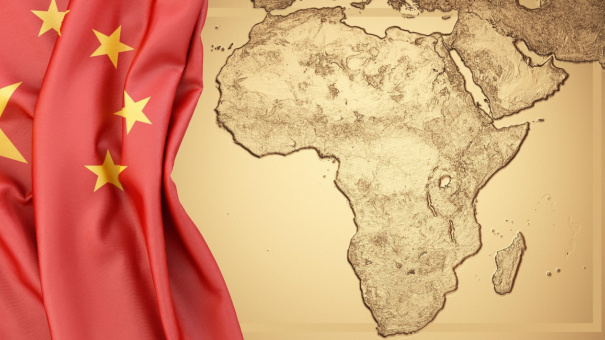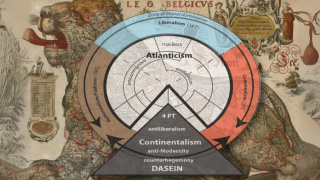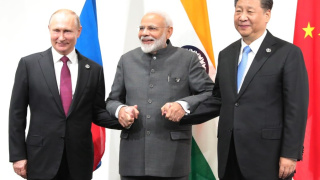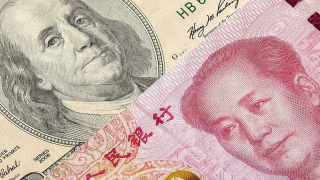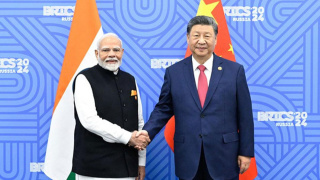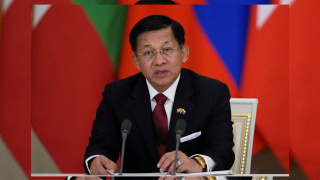China reaches out to Africa, Global South to counter trade headwinds from US
In countering headwinds from the Trump administration, which has launched a fierce tariff war, China has decided to work on a bigger plan, which includes deepening its engagement with the Global South.
Chinese President Xi Jinping has just concluded a visit to Southeast Asia. During his weeklong stay in Vietnam, Malaysia and Cambodia, Xi made some deft moves. The Chinese President decided to knit the region into a common rail transport network radiating from Kunming, capital of Yunnan province, China’s southern powerhouse. By commanding transport networks in the region, it was apparent that China hopes to ensure its dominance in its periphery.
Anticipating further pressure from Washington, Xi, after Asia, is now looking at Africa, arguably the heart of the Global South for entrenching China’s unrivalled influence in the rising continent. This is to be accomplished through the next phase of its mammoth Belt and Road Initiative (BRI)—a giant international connectivity international project that Beijing controls.
Soon after returning from southeast Asia, Xi received in Beijing’s ornate great hall of the people, William Rotu. Rotu is the President of Kenya, a key country on Africa’s east coast. China views Kenya as a pivotal state for extending its influence westwards. Transportation again is the key. In the first phase of BRI, China had built a railway linking Mombasa, Kenya’s port city to Nairobi, the capital, and Naivasha, a fertile farming hub in the country’s Central Rift Valley.
While the joint statement released after Rotu’s visit does not explicitly say so, it was widely anticipated ahead of his visit that China and Kenya would agree to the phase-2 extension of the railway.
Recently, Kenyan Finance Minister John Mbadi revealed that Chinese companies are forming a consortium that would provide 40 per cent of the funding for the US$5.3 billion, 475km (295-mile) railway line from Naivasha, to Malaba, a town on the Uganda border. The Chinese are expected to operate the railway and, for some years, charge toll fees, in order to recover their investment.
The project has major strategic implications. Once the new line from Kenya connects with Uganda's railway system, it would create a seamless transport corridor from the Indian Ocean to three landlocked countries--Uganda, Rwanda, and Burundi.
China is viewing its engagement with Kenya in broader pan-African terms. In the Chinese perspective, Kenya is a subset of expanding Chinese outreach to the entire African continent.
China also wants Kenya to emerge as a regional financial centre. Major Chinese banks, including China Development Bank (CDB), the Export Import Bank of China (Exim Bank), Industrial and Commercial Bank of China (ICBC), and Bank of China (BOC) have established a foothold in Kenya. These lenders together finance infrastructure projects, trade, and investment as well as energy projects. Significantly, Kenyan banks such as Equity Bank, Family Bank, and Stanbic Bank have established China-dedicated desks catering for transactions in Chinese yuan.
Besides, on infrastructure, the Chinese want to establish the Kipevu Oil Terminal in Mombasa Port, Lamu Port, the Liwatoni Floating Bridge, as well as the Thwake Dam being built by the China Gezhouba Group Company. Once completed, the project will empower thousands of residents in Kenya’s Lower Eastern region.
Kenya’s Special Economic Zones (SEZs) also offer unique opportunities for greater Chinese investments.
For instance, the Mombasa Special Economic Zone, can attract significant Chinese investment in agro-processing, pharmaceuticals, and automotive assembly.
China’s economic inroads into Africa mirrors Beijing’s own economic model involving coastal development, lubricated by heavy investment in infrastructure. That involves development of ports, which are linked to the hinterland with a vast network of railways, roads, including expressways and highways. Significantly, just as in China, the Chinese are heavily investing in Africa’s digital infrastructure, spearheaded by Huawei, China’s telecom giant.
Incidentally, China’s BRI projects in the continent have been nested under the Forum on China–Africa Cooperation (FOCAC).
Significantly, FOCAC, was established in 2000 as a fulcrum to advance BRI projects in Africa. At least 53 countries, as well as the African Union (AU) participate in this mechanism with China to foster trade, infrastructure development and cultural exchanges.
In its triennial meetings held alternatively in China or a designated African country, a three-year action plan, is usually unveiled. This blueprint outlines commitments such as loans, grants, and export credits to support development projects.
Unsurprisingly, the FOCAC platform was used to flag off the Mombasa-Nairobi Standard Gauge Railway in Kenya, enhancing regional connectivity. Similarly, it cleared expansion of Djibouti’s Doraleh Multi-Purpose Port, another strategic project to safeguard key shipping routes.
It was at FOCAC that the Chinese announced a zero-tariff policy benefiting 33 Least Developed Countries (LDCs) in Africa that had trade ties with China.
Focused on beefing up its soft power, the Chinese have granted 60,000 scholarships for African students. Besides, China is training 6,000 military personnel and 1,000 police officers—clearly a long-term investment for building human networks that have a long shelf-life.
It is evident that China has identified key nodes in Africa to expand its influence on a continental scale.
The Chinese have strategically invested around $ 700 billion in Africa, in a 10-year span that began in 2013, soon after Xi Jinping assumed charge as the General Secretary of the Communist Party of China (CPC). Overall, China has built over 12,000 kilometres of road and railway tracks, around 20 ports, and more than 80 power facilities in Africa, according to CCTV, China’s state broadcaster.
Among the strategic projects that China has undertaken under BRI, Djibouti’s Doraleh multi-purpose port stands out. Incidentally, this investment that took place after China, in 2016, had established, at a cost of $590 million, its first permanent overseas naval base in Djibouti—a strategic location between the Red Sea and the Gulf of Aden.
In Doraleh port project, the China Merchants Port Holdings (CMPH) has a 23.5 per cent stake. The CMPH’s inroad is not without controversy. It appears that the Djiboutian government seized control of the container terminal from UAE-based DP World to allow CMPH an entry.
Of late, the Chinese have focused on clean energy projects following criticism that China’s coal fired plants announced earlier in Africa were causing severe environmental damage.
Consequently, Chinese companies have recently stepped up their investments in renewable energy projects. For instance, in Nigeria—Africa’s powerhouse on the Atlantic coast—the Chinese Exim Bank is reportedly providing 85 per cent funding for the Mambilla hydroelectric plant—a $4.9 billion undertaking.
Similarly, the Chinese are pitching in $ 533 million for the expansion of Zimbabwe’s Kariba Hydroelectric Power Station.
In tune with focus on clean and digital economy, China is investing heavily in Africa’s deposits of lithium, cobalt, and copper—the feedstock for its booming electric vehicles industry.
For instance, in Zimbabwe—a country that has been on its radar for a long time—China’s Sichuan PD Technology Group has been investing in the Kamativi Lithium Mine. A processing plant, which is part of the project will produce spodumene concentrate--a key material for batteries.
The Chinese have also been scouting for lithium in the Democratic Republic of Congo (DRC), Namibia, Mali, and Ethiopia.
Similarly, China is pitching huge resources to secure copper, whose demand has surged because the metal is heavily used in electric vehicle engines
That includes a $1.9 billion deal, reached last year, by state-owned MMG to buy the Khoemacau mine in Botswana, one of the world’s largest copper mines.
In July, Chinese firm JCHX Mining Management agreed to buy Zambia’s indebted Lubambe copper mine for just $2.
According to the American Enterprise Institute, China invested $7.8 billion in mining in Africa, in 2023 alone.
In order to fire Africa’s internet based digital economy, the Chinese, leveraging their experience at home, have deployed Huawei to develop the required infrastructure.
Huawei has already rolled out 5G networks in several African countries. It has implemented smart city solution in cities such as Nairobi, focusing on public safety, traffic management, and urban planning. The telecom giant has, in partnership with government and private entities, also established data centres that support cloud services and digital transformation. Besides, through its ICT Academy Programme, Huawei has trained thousands of African students and professionals in digital technologies. Its RuralStar initiative has digitally connected Africa’s remote areas.
Riding on the Huawei’s digital foundations, China’s e-commerce giants such as Alibaba and TenCent Holdings are making their presence felt in Africa.
A leader in e-commerce and logistics, Alibaba, through its eWTP (Electronic World Trade Platform) initiative, is facilitating affordable cross-border trade, opening fresh opportunities for Africa’s small and medium-sized enterprises (SMEs).
On its part, TenCent has invested in African startups like TymeBank and Ozow in South Africa, and Helium Health in Nigeria, focusing on fintech, health tech, and digital payments. Tencent Cloud has also collaborated with Orange Middle East and Africa to make, by integrating mini-apps, the Max, its super-app, more impactful.
Kenya, often called “Silicon Savannah,” has demonstrated exponential growth in e-commerce and fintech solutions, highlighted by M-Pesa, an innovative payment platform.
As China digs deeper in Kenya’s digital economy, imparting knowledge about blockchain, artificial intelligence, and cybersecurity could further enhance Nairobi’s technological heft.
As Trump’s tariffs loom, Africa and China are showing signs of glueing more tightly on the economic turf. China had already increased imports of African soybeans and other crops faced with headwinds from Washington.
It is therefore natural to expect that Africa, especially those countries most impacted by Trump’s tariffs such as Lesotho, Mauritius, and Madagascar—all textile exporters that had previously enjoyed duty free access to the US, will start looking at China as an alternative. Some heavy weights such as Nigeria and South Africa, also hit by US duties are also expected to look afresh at expanding their engagement with China.
